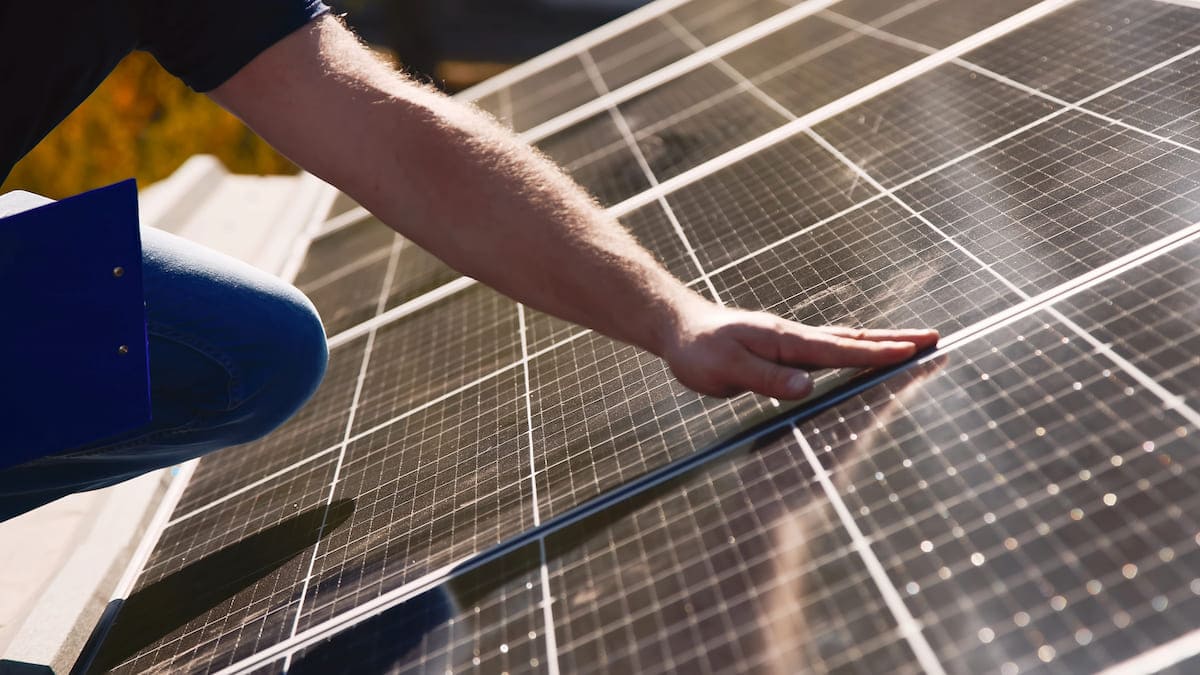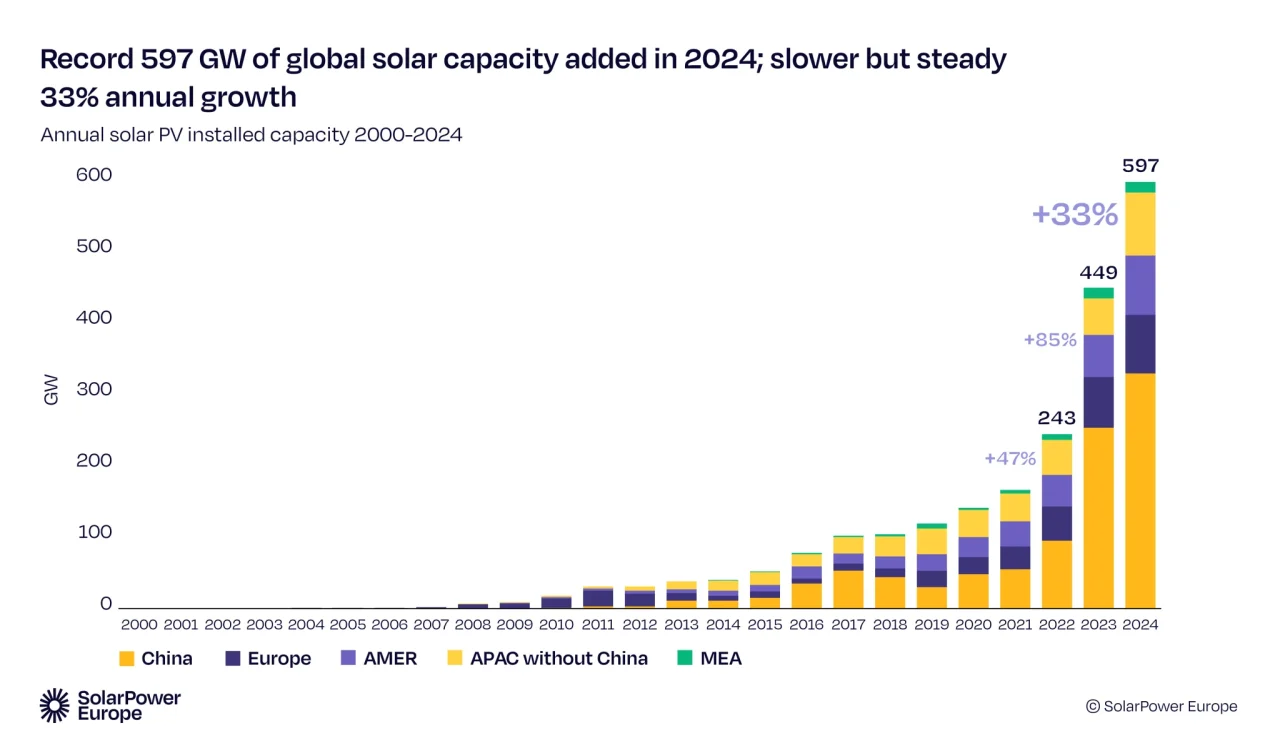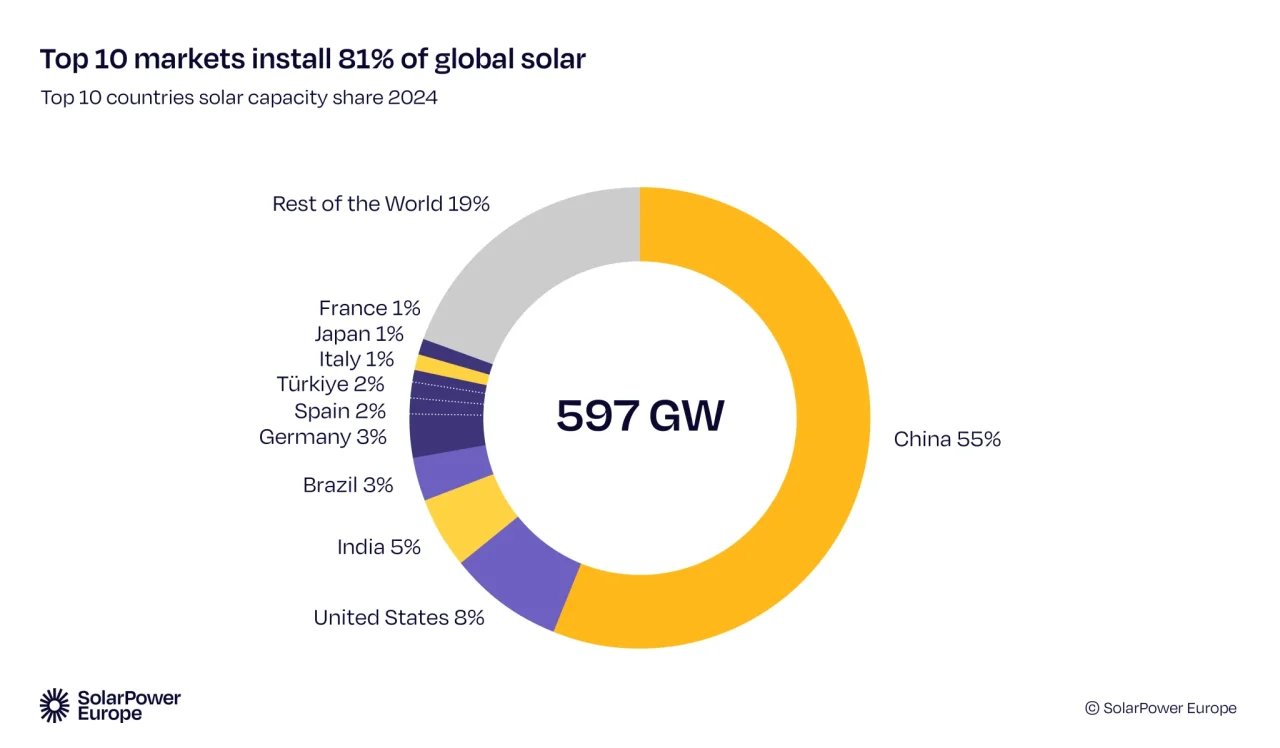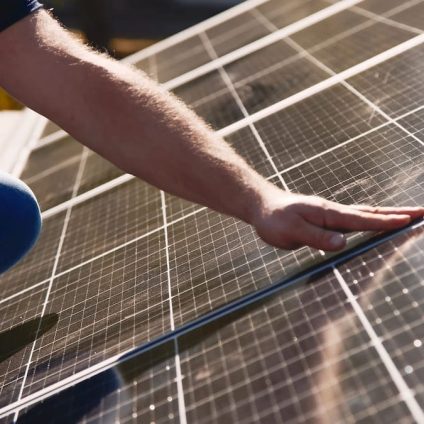With 597 GW of photovoltaics installed in 2024, the global solar sector sets a new growth record. Italy is the eighth largest market in the world thanks to 6.8 GW installed last year.

SolarPower Europe’s report on global photovoltaics
It took 68 years from the launch of the first commercial solar cell in 1954 to reach 1000 GW of installed capacity worldwide. Doubling that number took just two more years. With 449 GW added in 2023 and another 597 GW in 2024, global photovoltaic capacity has now surpassed 2000 GW. As of the end of last year, 2.2 TW of operational solar power was recorded, with a remarkable 1.4 TW concentrated in the Asia-Pacific region.
These numbers come from the latest analysis by SolarPower Europe, an annual report that includes updated data and short-to-mid-term forecasts. According to the report, the world is on track to install 1 TW of new solar capacity annually by the end of the decade.

“The solar age has truly arrived,” said Walburga Hemetsberger, CEO of SolarPower Europe. “While solar deployment varies across regions, there’s a global consensus on the need for flexible, electrified energy systems supported by critical technologies like battery storage. Policymakers worldwide must ensure that their flexibility plans align with the solar reality.”
Where is solar growing the fastest?
Despite record-breaking growth, the expansion of solar remains highly uneven. Of the 597 GW deployed in 2024, a staggering 329 GW came from China alone – accounting for 55% of new global photovoltaic capacity. The country continues to dominate the global solar market, and not even the looming shift in its incentive regime, expected to slow installations in 2026, seems likely to change that in the short term.

Below China, other markets show strong momentum. The United States maintained its position as the second-largest solar market with 50 GW added in 2024 (10% of the global total). However, the return of protectionist trade policies under the Trump administration is creating major uncertainty. “In the medium term, we expect the situation to worsen, undermining investor confidence and triggering a market downturn,” the report states.
India moved into third place with 30.7 GW of new capacity, driven by the commissioning of large-scale solar projects, improved infrastructure through the Green Energy Corridor, and new regulatory frameworks such as the Renewable Purchase Obligation (RPO).
“India’s solar strategy is positioning the country as a key driver of the energy transition, with robust growth projected in the coming years,” the association notes. “To meet its national goal of 500 GW of renewables by 2030, India aims to add another 200 GW of solar power within the next five years.”
Trailing behind are Brazil (18.9 GW), Germany (17.4 GW), Spain (8.7 GW), and Turkey, which saw a 394% year-over-year increase to reach 8.5 GW. Italy ranks eighth with 6.8 GW, surpassing Japan (6.2 GW) and France (4.7 GW).
Market trends shaping the solar sector
The report outlines key market trends behind the growth of different solar segments. In 2024, falling solar module prices gave a strong boost to utility-scale projects, which increased by 36% and added 347 GW.
Meanwhile, rooftop solar growth was constrained by declining electricity prices, which returned to pre-energy crisis levels, and reduced policy support in traditional European markets. Still, new rooftop installations rose to 249 GW, up from 194 GW in 2023.
Forecast: global photovoltaic capacity to exceed 7 TW by 2030
The analysis extends to 2029 with a preliminary outlook for 2030. “By the end of 2024, solar photovoltaic accounted for 46% of global renewable capacity, totaling 2.2 TW. We project that global installed solar capacity will exceed 7 TW by 2030, representing about 65% of the renewable capacity needed to meet the global 11 TW target.”
More specifically, large-scale ground-mounted systems are expected to add 396 GW in 2025, growing at 14% annually and maintaining around 60% market share. Projections include:
- 399 GW in 2026
- 446 GW in 2027
- 493 GW in 2028
- 533 GW in 2029
Rooftop solar installations are expected to reach:
- 260 GW in 2025
- 266 GW in 2026
- 309 GW in 2027
- 355 GW in 2028
- 397 GW in 2029
Read the report here.












